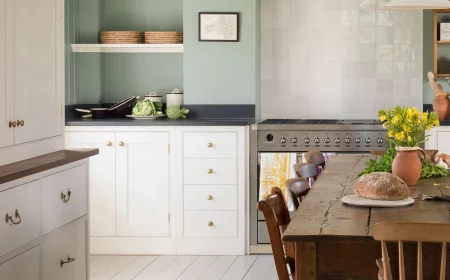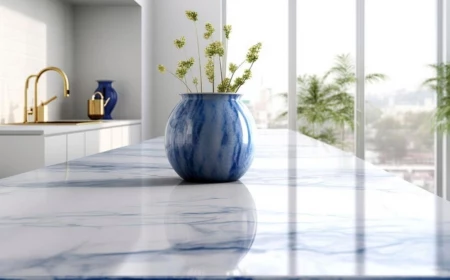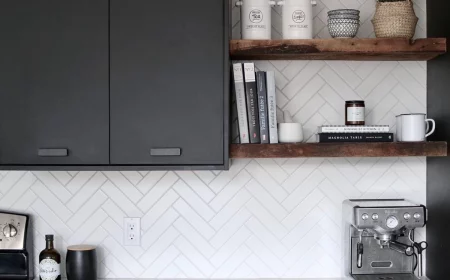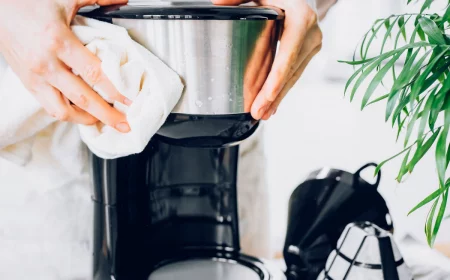Thinking About Sage Green Kitchen Cabinets? Read This First.
I’ve had a paintbrush in my hand for what feels like a lifetime, transforming kitchens from top to bottom. I’ve seen color fads explode and then fade away—remember those super warm, golden kitchens? And then the stark gray trend that followed? But through it all, one color has quietly held its ground: sage green. It doesn’t need to be the loudest color in the room. Instead, it brings a sense of calm and character that just… works.
In this article
But getting a sage green kitchen right is about more than just picking a color you like on a tiny paper swatch. It’s about understanding how light plays in your space, what materials you pair it with, and, most importantly, how to get a finish that actually lasts. I’ve learned these lessons the hard way over the years, and I want to share the real-deal knowledge that separates a pretty kitchen from a truly durable and beautiful one.
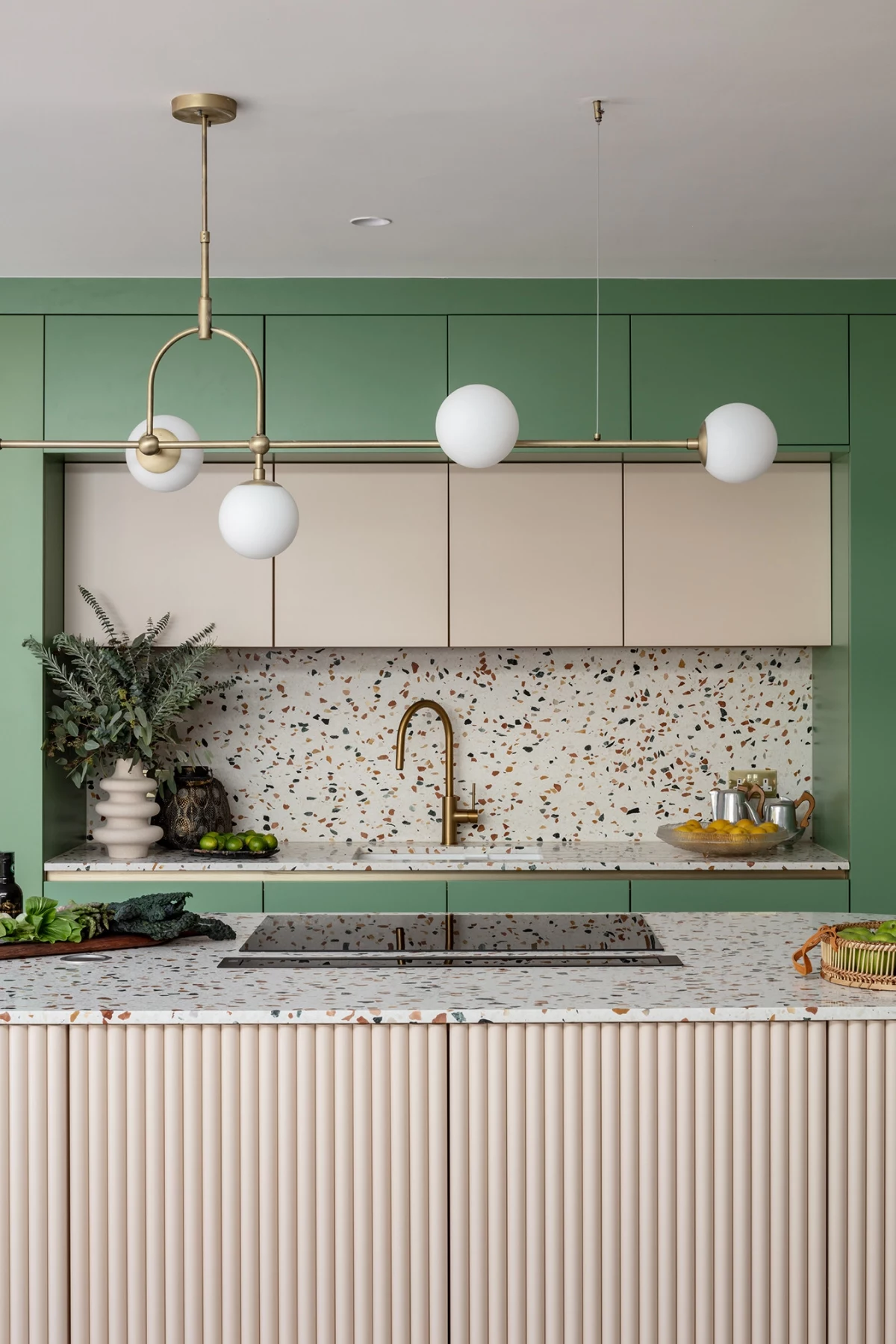
First Things First: What IS Sage Green, Really?
Before you even think about cracking open a can of paint, let’s talk about what sage green is. It’s a fantastic, complex neutral. At its heart, it’s a green that’s been beautifully muted with gray. But the magic—and the potential for disaster—is in the undertones. Some sage greens lean a little yellow, which gives them a warm, earthy, almost organic vibe. Others have a hint of blue or gray, making them feel cooler, more sophisticated, and a bit more modern.
Understanding this is key. Oh yeah, and there’s a technical number you should absolutely know about: the Light Reflectance Value, or LRV. It’s a scale from 0 (jet black) to 100 (pure white) that tells you how much light a color reflects. A typical sage green falls somewhere between 30 and 60.
So, why should you care? Because a low LRV sage (around 30-40) will absorb more light, creating a cozier, moodier atmosphere. This is great for a large, bright kitchen where you want to add some depth. On the flip side, a higher LRV sage (50-60) will bounce light around, making a smaller or darker kitchen feel much more spacious and airy. You can usually find the LRV on the back of the paint chip or on the paint company’s website. It’s a game-changer.
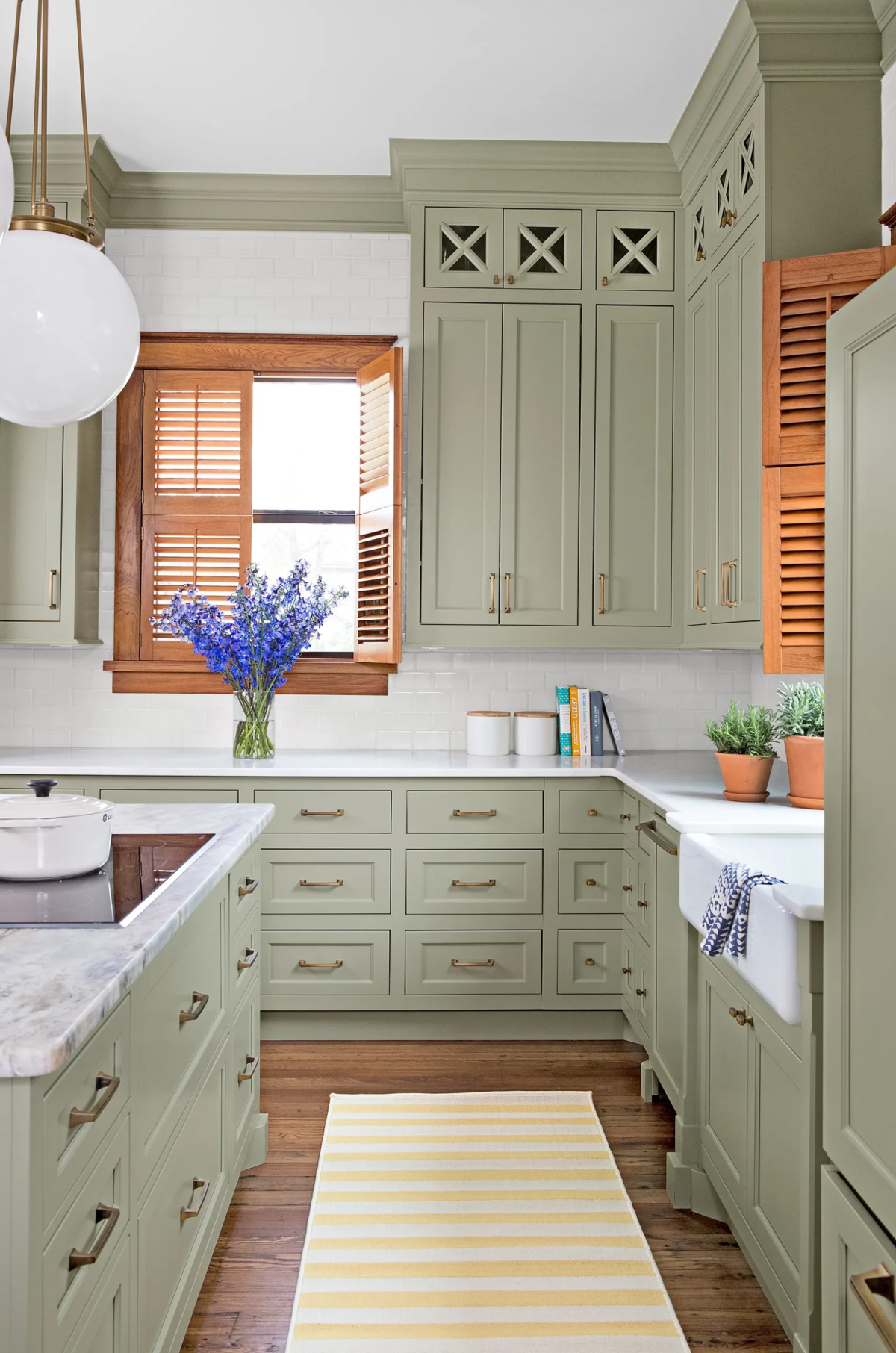
To give you a starting point, here are a couple of my go-to shades that I recommend to clients all the time:
- For a brighter, more neutral feel: A classic choice is a sage with an LRV around 45. It’s a very balanced green-gray that’s incredibly versatile and doesn’t lean too hard in any one direction. Think of something like Benjamin Moore’s October Mist.
- For a moodier, deeper look: If you want more drama, look for a sage with an LRV in the low 30s. This type of color feels rich and grounding, almost like what you’d see in a high-end custom kitchen. Sherwin-Williams’ Evergreen Fog is a fantastic example of this.
The Lighting Test: The One Step You Cannot Skip
I’ll never forget this one project. The homeowner picked out a gorgeous, earthy sage under the bright lights of the hardware store. We painted a sample board, and she loved it in her kitchen during the day. But the first time she saw the finished cabinets at night, under her warm-toned light bulbs, her face just dropped. The color had morphed into a muddy, sad-looking olive green. The warm light had pulled out all the yellow undertones she hadn’t even noticed.
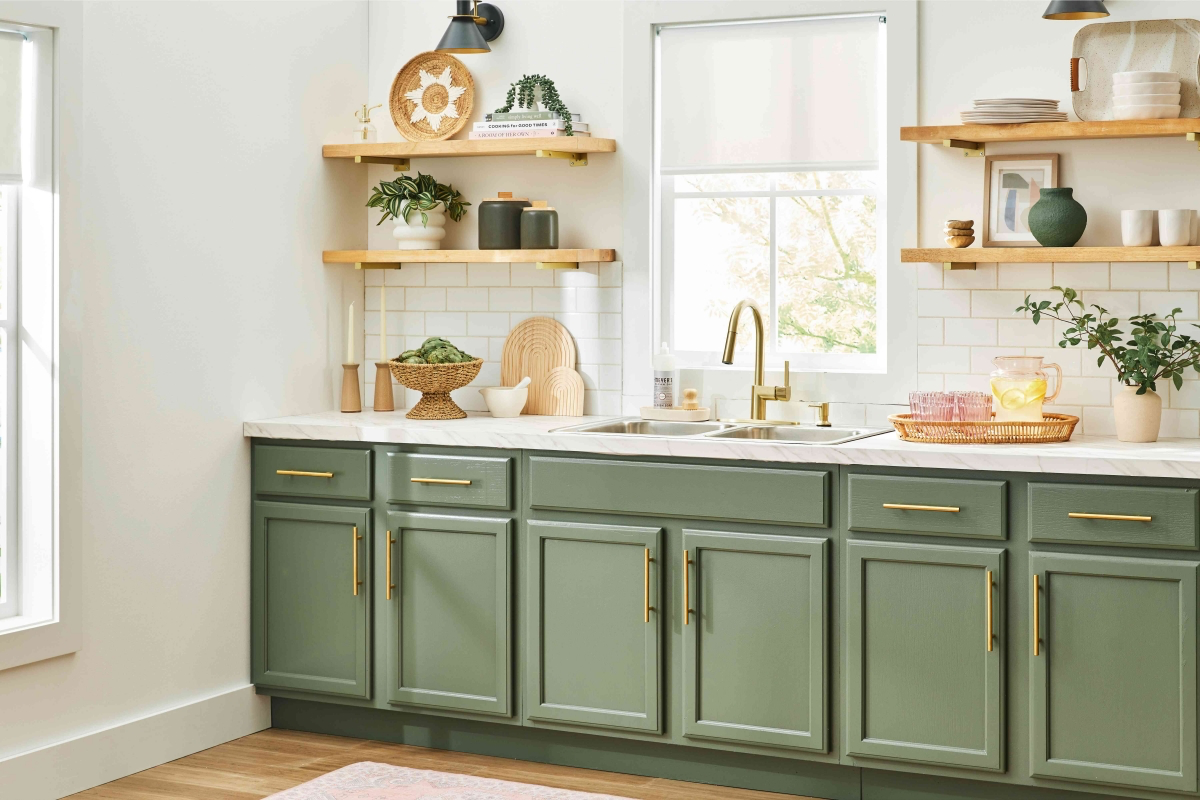
Since then, I’m a total stickler for this. You HAVE to paint large sample boards—I’m talking at least two-foot by two-foot squares—with two coats of your top contenders. Then, move those boards around your kitchen for a full 24 hours. Look at them in the morning, in the bright afternoon sun, and at night with all your lights on. How does the color look next to your countertops? Your floor? Your backsplash? The one that looks great in every single scenario is your winner. Seriously, skipping this is the single most expensive mistake you can make.
Getting It Done: The Real Work of Painting Cabinets
Let’s be honest: painting cabinets is 80% prep work and only 20% the fun part of actually painting. That prep is what gives you a rock-solid finish that won’t chip in six months. Before we even get to the steps, let’s talk about reality.
DIY vs. Hiring a Pro: The Quick Breakdown
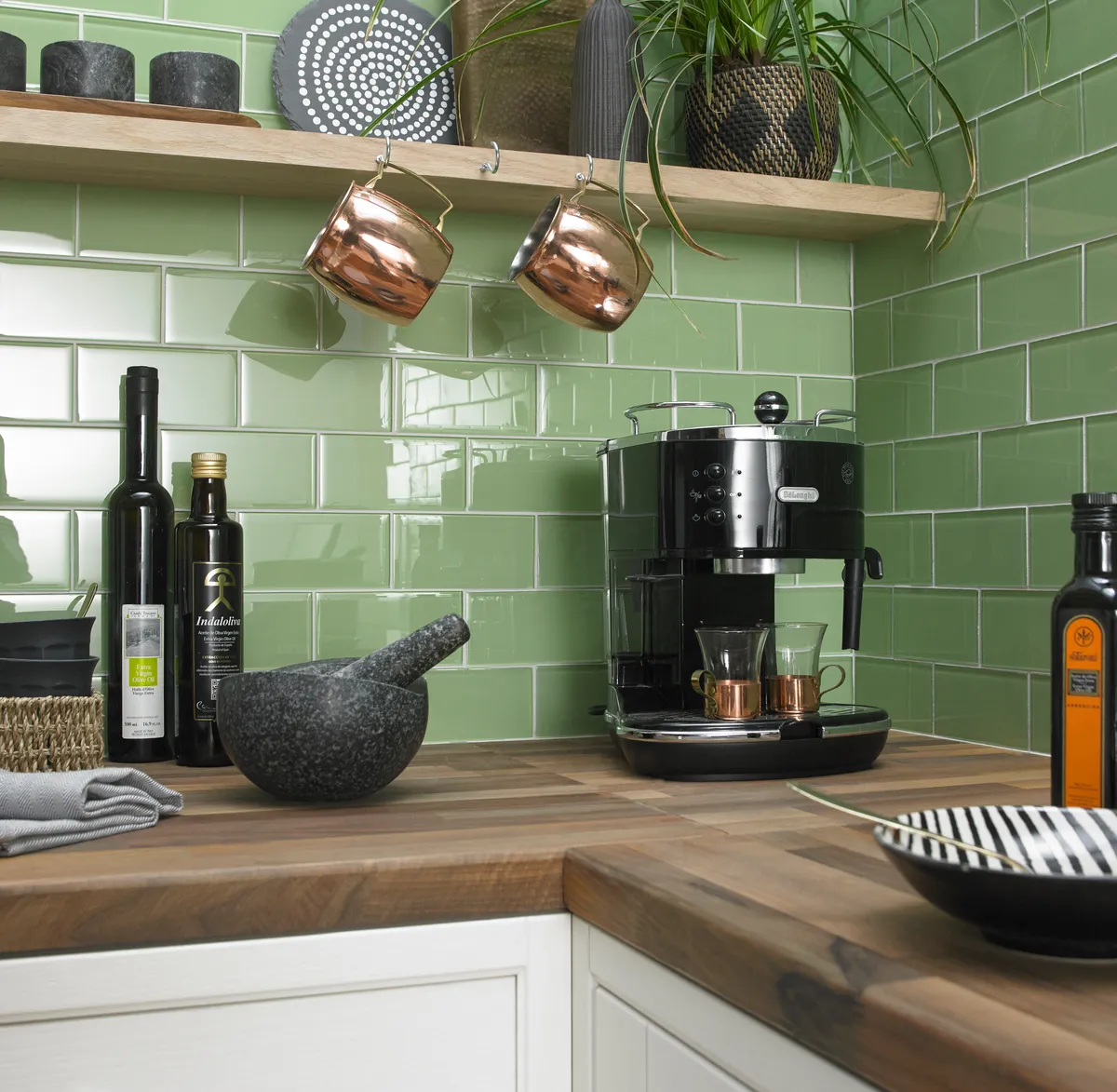
Can you do this yourself? Absolutely. But be realistic about the time and money. For a standard-sized kitchen, you’re looking at around $200 to $500 in materials if you do it yourself. But the bigger cost is time. Plan for a solid 40 to 60 hours of work. This isn’t a weekend project; it’s more like a full week-of-your-vacation project.
Hiring a professional crew like mine? It’s a different story. You’re looking at a cost between $3,000 and $7,000, depending on the size of your kitchen and the condition of your cabinets. The huge benefit, though, is that it gets done in about 5-7 days, and the finish is often sprayed, which gives it a flawless, factory-like quality.
Step 1: Teardown and Label EVERYTHING
First, every single door, drawer front, and piece of hardware comes off. We use a simple system: a piece of numbered painter’s tape on the back of each door and a corresponding piece inside the cabinet box it belongs to. A kitchen can have dozens of doors, and trust me, they are not all interchangeable. Getting this wrong is a nightmare. All the hinges and knobs go into clearly labeled baggies. This isn’t being fussy; it’s essential discipline.
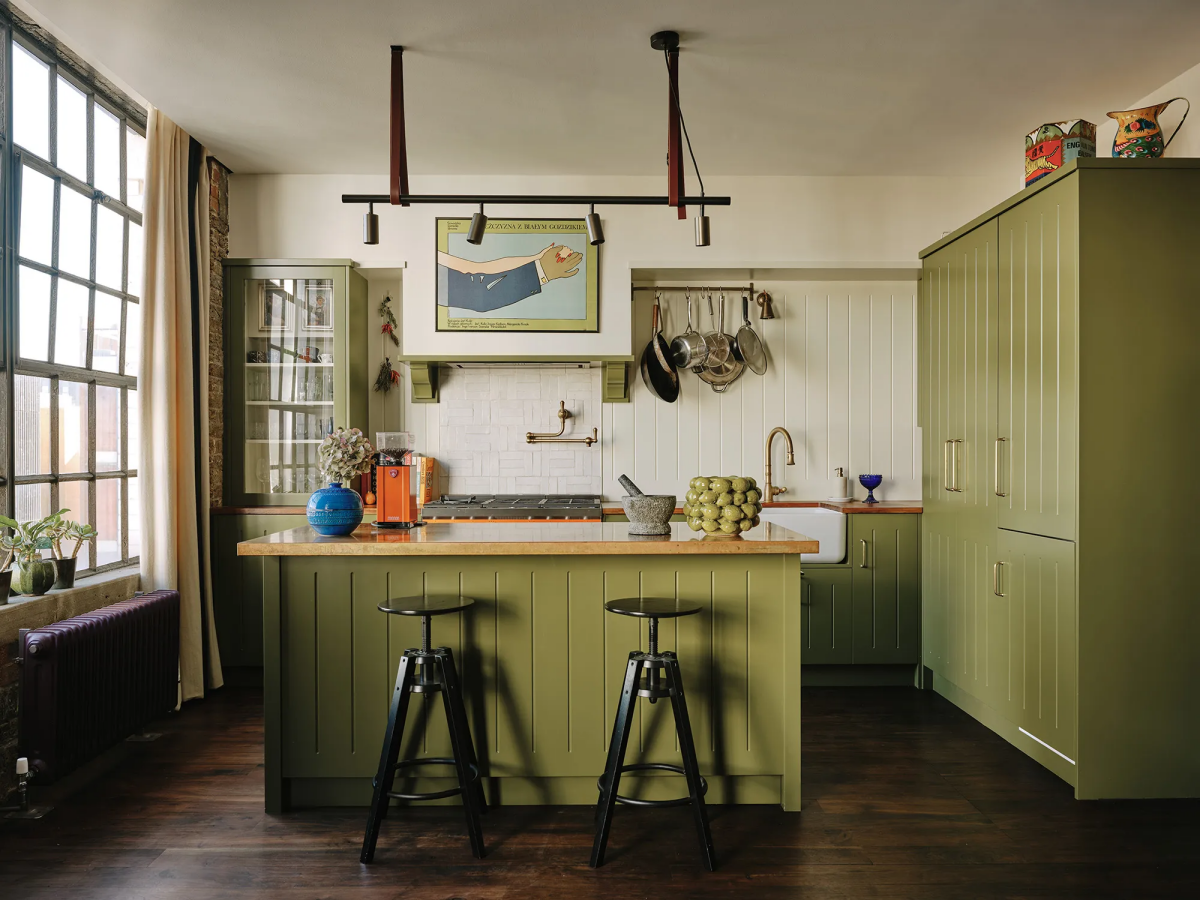
Step 2: The Deep, Deep Clean
Kitchens are greasy. It’s a fact. Cooking fumes, fingerprints, and old cleaning sprays leave a film on cabinets that will laugh in the face of your expensive paint. We scrub every surface with a strong degreaser. A product like Krud Kutter, which you can find at most home improvement stores for about $10, is my absolute favorite. After scrubbing, wipe everything down with a cloth and clean water to remove any residue. The surface has to be perfectly clean and dry before you even think about sanding.
Step 3: The Scuff Sand (and What It Actually Means)
This is where people get confused. You are NOT trying to sand off the old finish. You’re just scuffing it up to create a microscopic texture for the primer to grip onto. All you need is 120-grit sandpaper (a pack costs about $5) and a light touch. You just want to knock the shine off the old finish. After sanding, vacuum up all the dust and wipe every surface with a tack cloth.
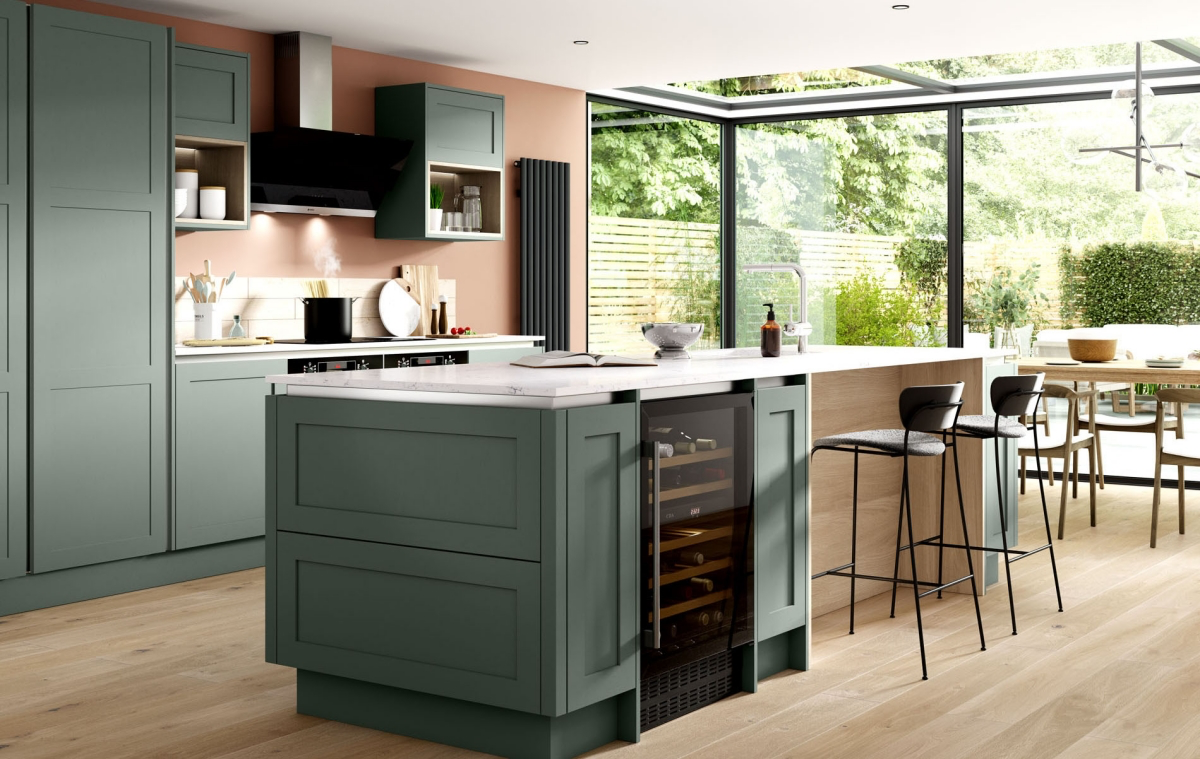
Step 4: Prime Like You Mean It
Do not skip the primer! Especially on kitchen cabinets, where wood tannins or old stains can bleed through your beautiful new paint color. For cabinets, a shellac-based primer like Zinsser B-I-N is non-negotiable. It blocks stains and odors like nothing else and provides an amazing base for your paint. It’s about $20 a quart, and worth every penny.
Quick Tip: A common rookie mistake is applying paint (or primer) too thickly. It might look like it’s covering better, but it will never cure properly. It’ll stay soft, gummy, and will peel or dent easily. Two thin, even coats are always better than one thick one.
Step 5: The Fun Part—Paint!
Finally! Apply two thin coats of your sage green paint, letting it dry completely between coats as the can recommends. Whether you brush or spray is up to you. Brushing is more accessible for DIYers, but a sprayer gives that professional, super-smooth finish. If you’re brushing, invest in a high-quality angled brush (like a Purdy) for about $15. It makes a huge difference.
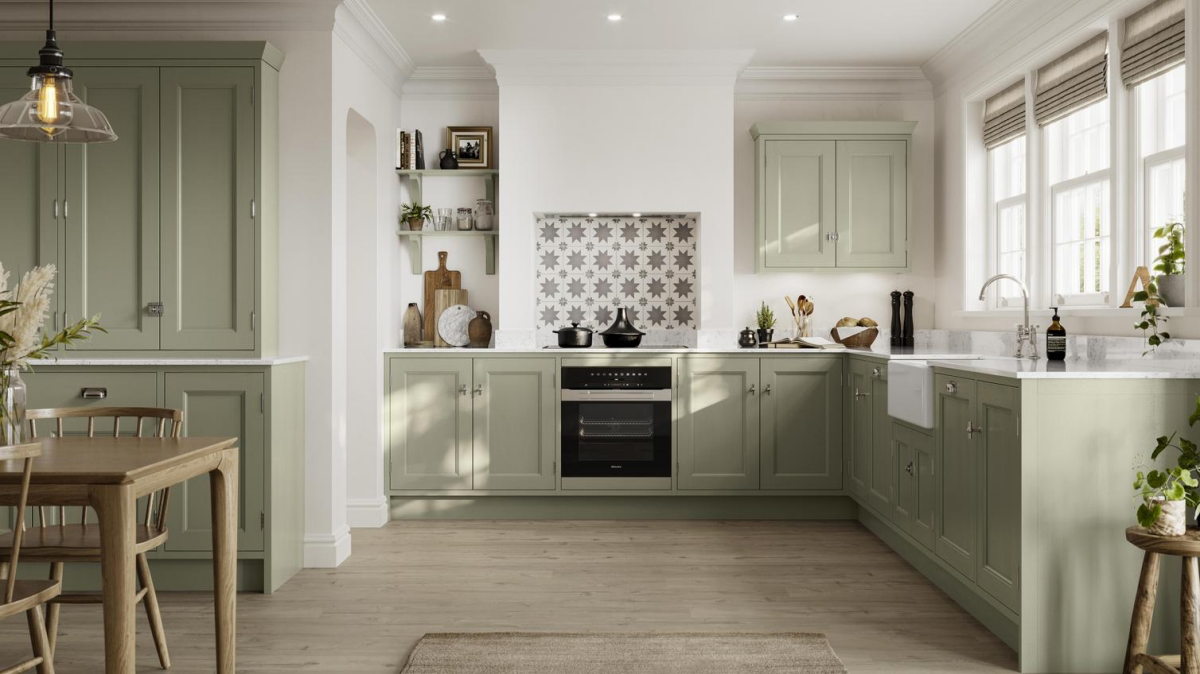
And what about the sheen? For kitchens, I almost always recommend a satin or semi-gloss finish. Satin has a soft, low-key glow and is great at hiding minor imperfections. Semi-gloss has more shine, making it extremely durable and easy to wipe clean—a big plus in a high-traffic area. It’s a trade-off between looks and pure utility.
Step 6: Protect Your Work with a Topcoat
Even though modern paints are pretty tough, I still recommend a clear topcoat for kitchen cabinets, especially in a satin or matte finish. A water-based polyurethane will add a final layer of armor against scuffs, scratches, and grease. Two thin coats will do the trick.
Putting It All Together: Styling Your Sage Green Kitchen
Okay, your cabinets are painted. Now for the fun part! Sage green is a fantastic team player. Here’s what it loves to be paired with:
- Hardware: Warm metals are a showstopper. Brass or champagne bronze hardware looks incredibly elegant against sage green. For a more modern or industrial vibe, matte black is a killer choice. Polished nickel works beautifully for a timeless, classic look.
- Countertops: You can’t go wrong with classic white. A white quartz or marble-look countertop makes the sage green pop and keeps the whole space feeling bright and clean. Butcher block countertops also look amazing, leaning into that warm, earthy feel.
- Backsplashes: A simple white subway tile is a can’t-miss classic. For something a bit more organic, a zellige tile with its subtle variations adds texture and character that complements the sage perfectly.
And there you have it. It’s a lot of work, for sure, but creating a beautiful, lasting sage green kitchen is one of the most rewarding updates you can make. It’s a color with soul, and when you get it right, it creates a space that feels both timeless and perfectly you.
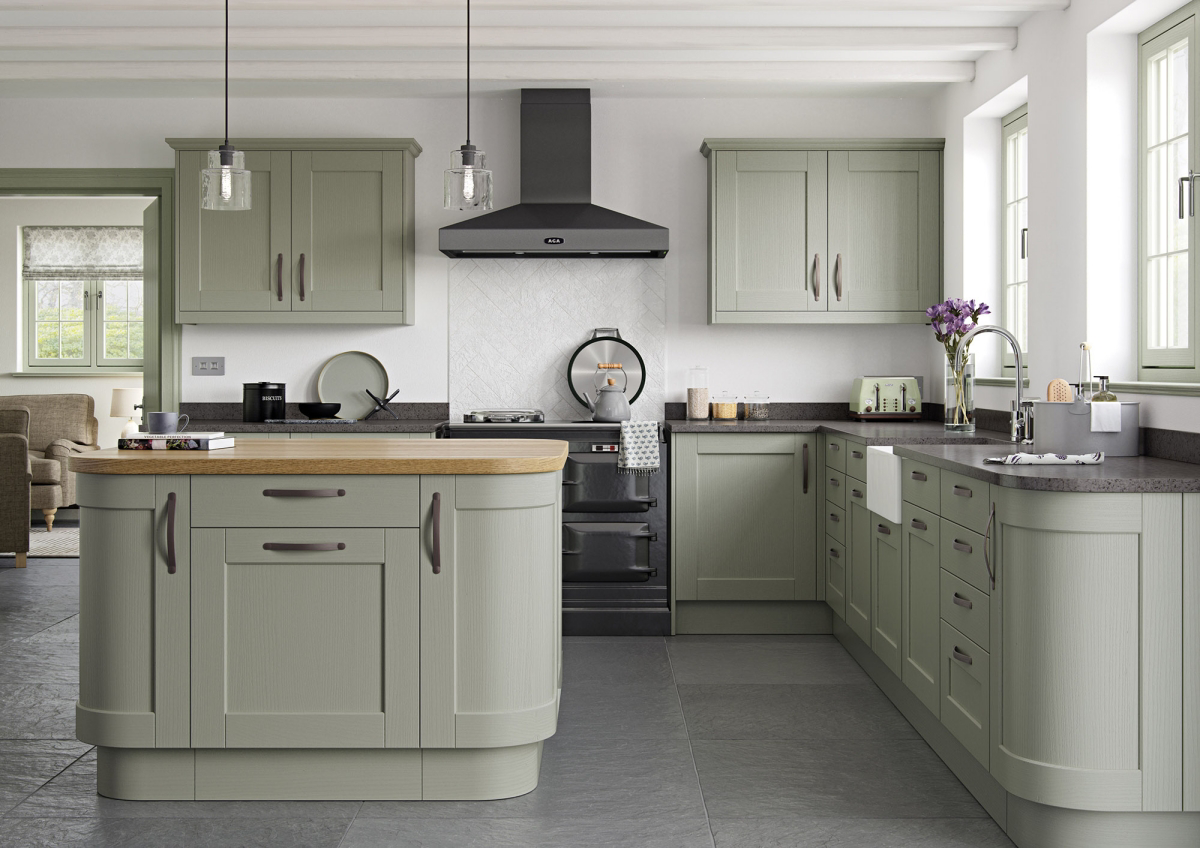
Galerie d’inspiration
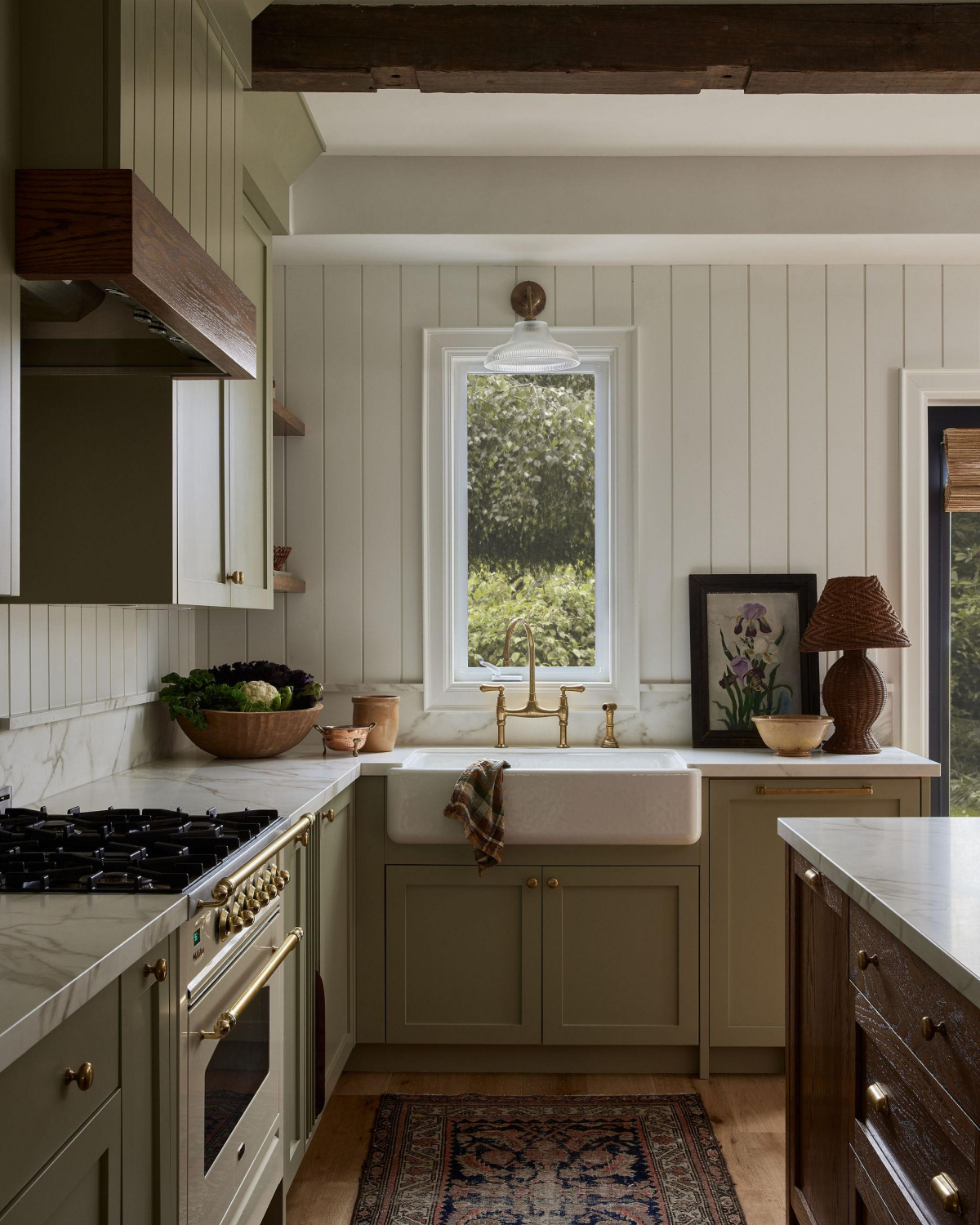
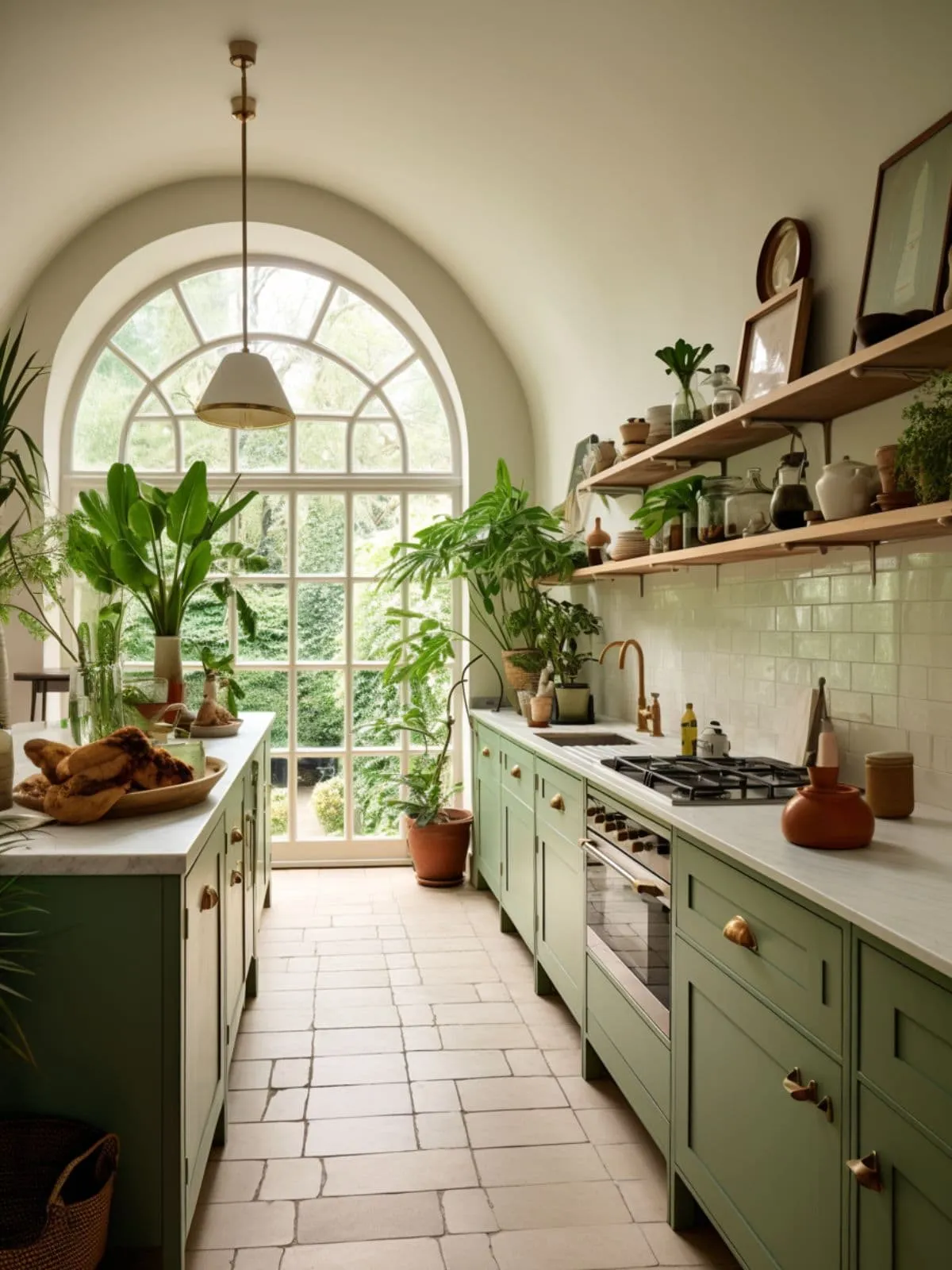
The right hardware is the jewelry of your kitchen. For sage green cabinets, the choice dramatically shifts the mood.
Warm Polished Brass: Creates a timeless, slightly glamorous look that enhances the green’s warmth. Perfect for a classic or modern farmhouse feel.
Matte Black: Offers a sharp, modern contrast that feels graphic and industrial. It grounds the softness of the sage with a bold, contemporary edge.
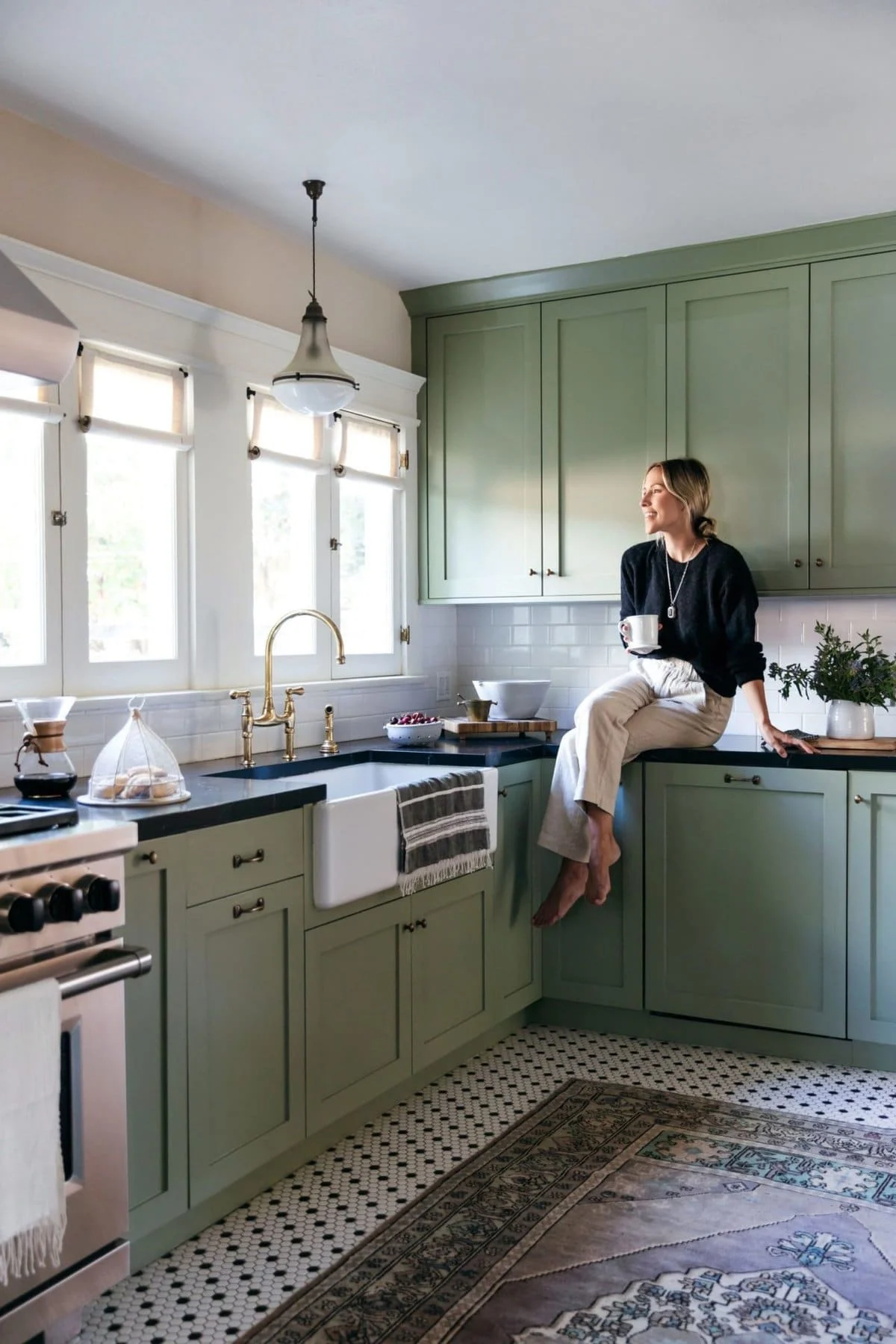
A study from the University of Georgia found that looking at the color green for even short periods can have a restorative effect on the mind, reducing mental fatigue.
This is the subtle power of a sage green kitchen. It’s not just a color choice; it’s an atmospheric one, creating a backdrop for calmer mornings and more relaxed evenings.
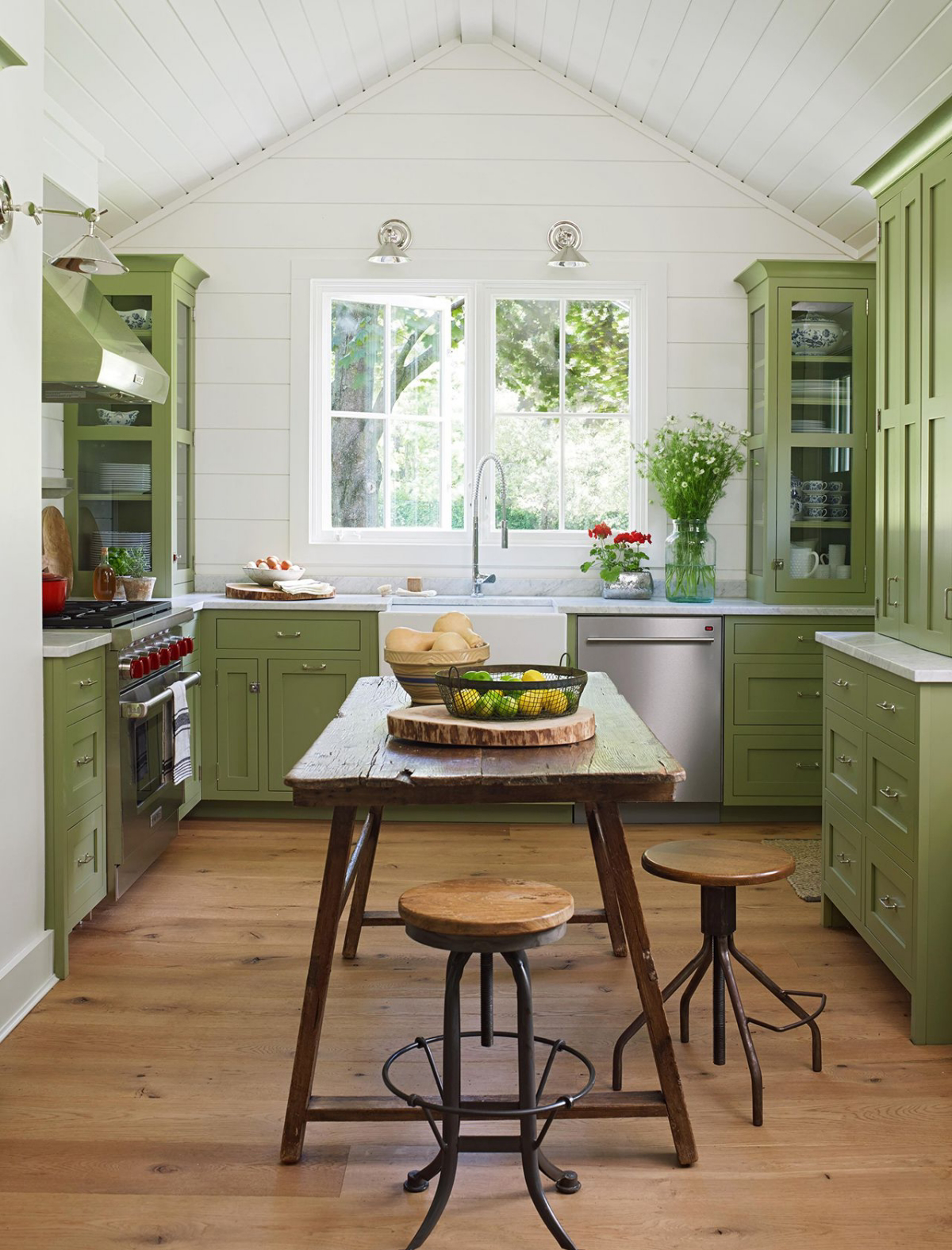
Pairing sage green with the perfect countertop is crucial. The right material will either complement its earthy nature or provide a crisp contrast.
- White Quartz with Subtle Veining: A surface like Caesarstone’s Calacatta Nuvo offers the classic look of marble without the high maintenance. The soft grey veins beautifully echo the grey undertones in the sage.
- Butcher Block: Warm woods like walnut or oak introduce natural texture and turn up the cozy, organic vibe, especially for a farmhouse or cottage aesthetic.
- Honed Black Granite: For a dramatic, sophisticated statement, a non-glossy black granite creates a powerful anchor for the muted green.
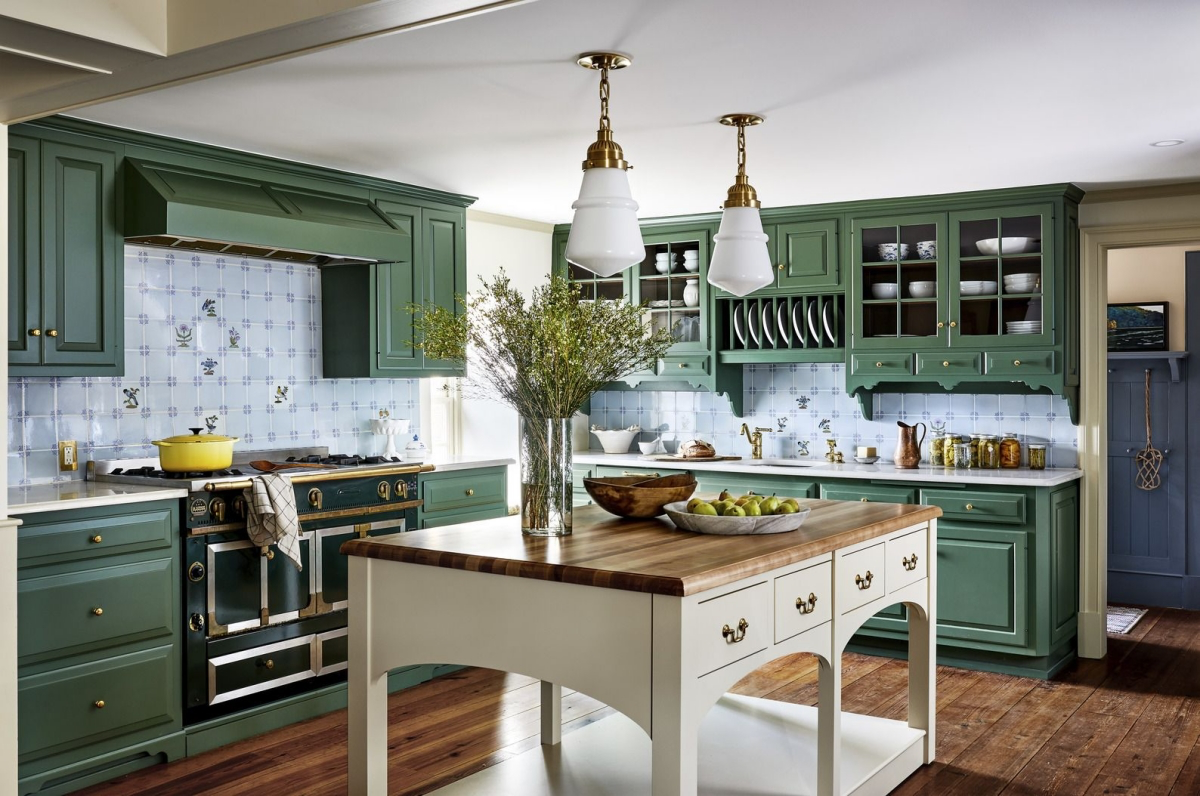
Thinking of painting the cabinets yourself?
The secret to a professional-looking, durable finish isn’t in the final coat—it’s in the prep. A high-adhesion primer is non-negotiable. Look specifically for a shellac-based or oil-based bonding primer, like Zinsser B-I-N. It blocks stains and, most importantly, creates an ultra-strong bond to the old surface, preventing the chipping and peeling that plagues many DIY cabinet paint jobs within a year.
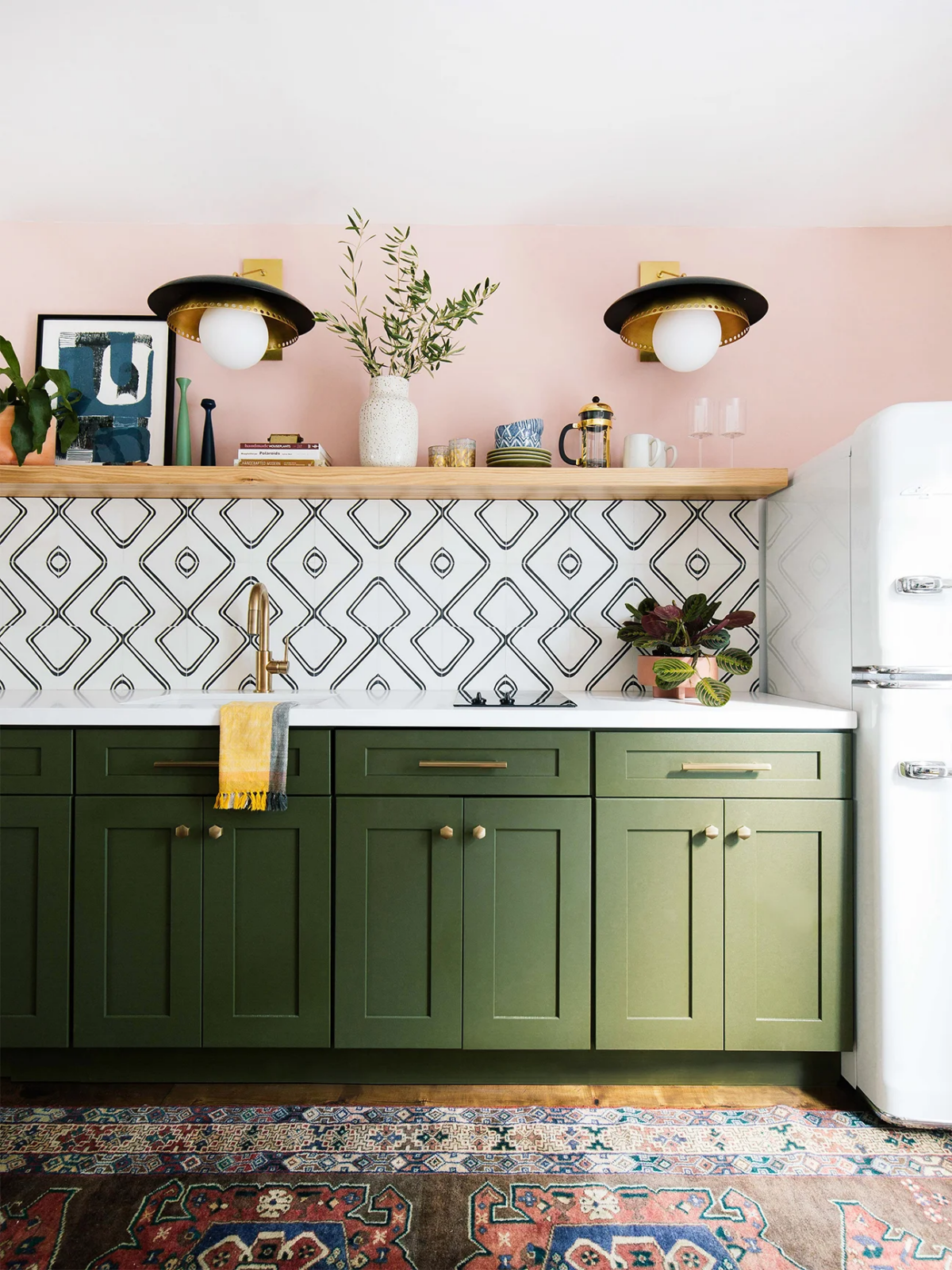
- A finish that feels velvety to the touch.
- Exceptional durability against daily wear and tear.
- A subtle sheen that doesn’t scream “newly painted.”
The secret? A high-quality satin or cabinet-grade finish. While semi-gloss is easier to wipe down, a modern satin finish (like Benjamin Moore’s ADVANCE) provides a more sophisticated, low-lustre look that hides minor imperfections better and cures to a hard, furniture-quality surface.
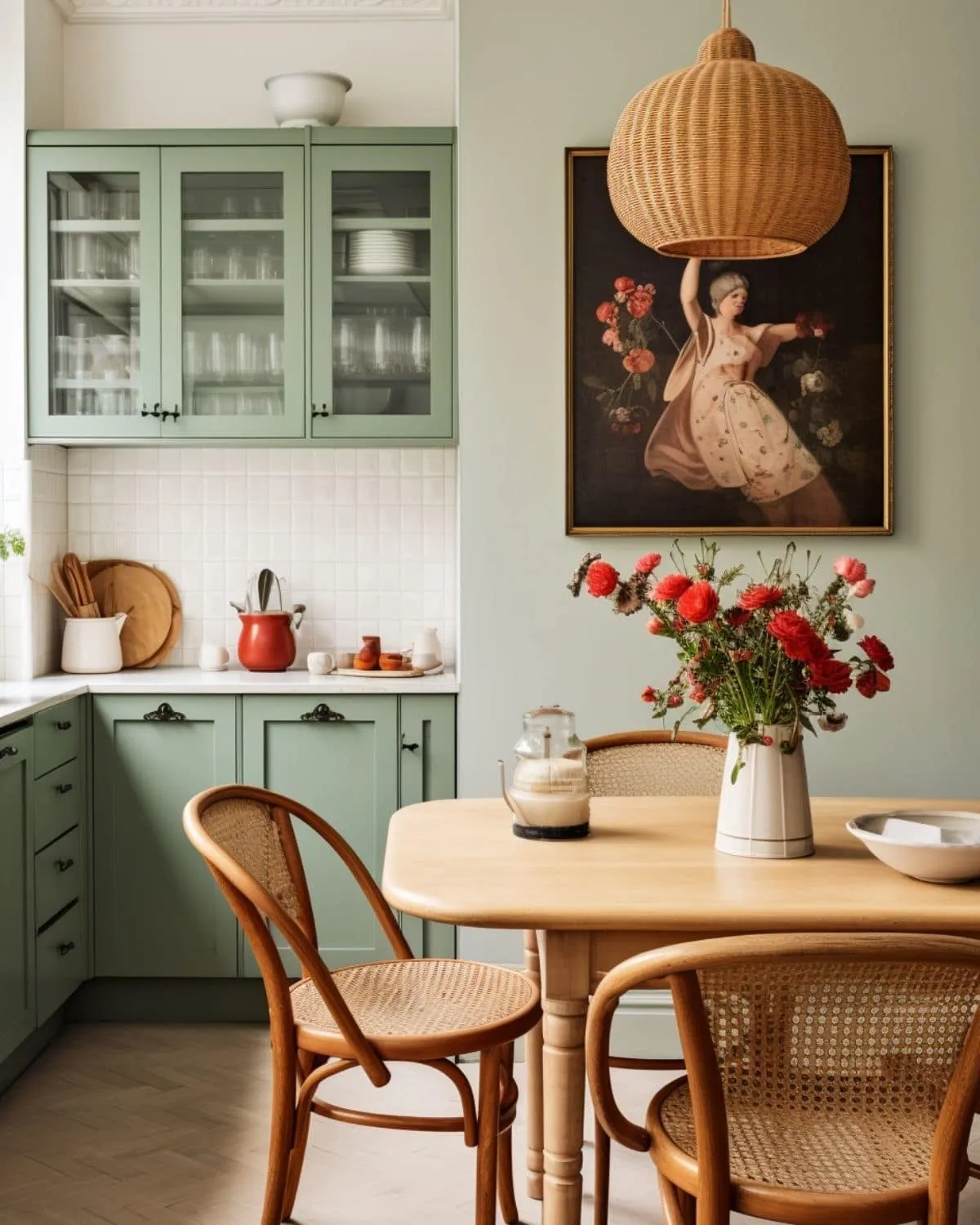
A word on white: The white you pair with your sage green cabinets is just as important as the green itself. A stark, cool-toned brilliant white can make a warm, earthy sage look muddy and dated. Instead, opt for a soft, creamy off-white with warm undertones, like Sherwin-Williams’ Alabaster or Farrow & Ball’s Wimborne White, for trims and walls to create a harmonious, cohesive look.
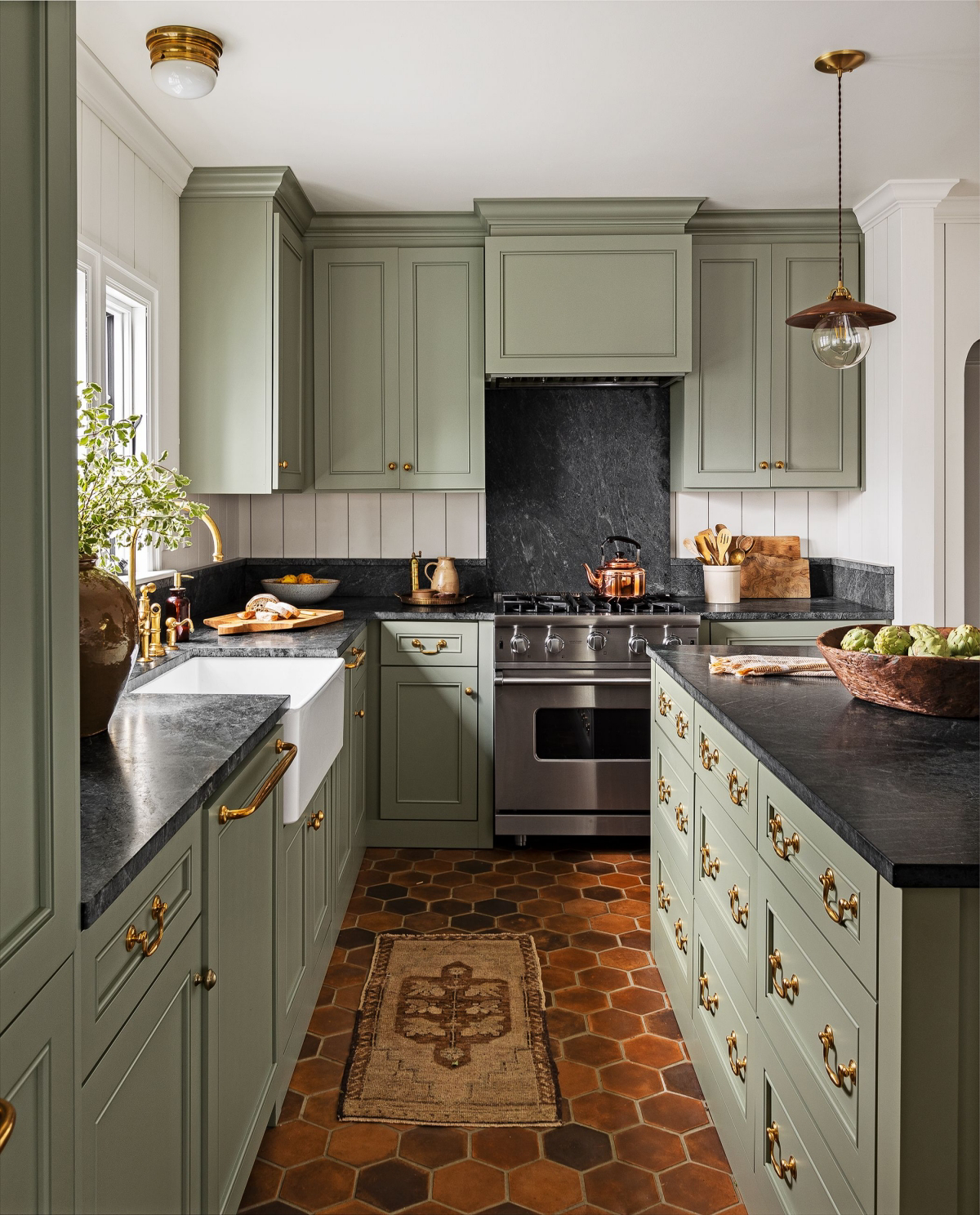
For a modern and budget-savvy take, consider a two-tone kitchen. By painting only the lower cabinets or the island in your chosen sage green (like Farrow & Ball’s popular Pigeon) and leaving the upper cabinets a crisp white or a natural light wood, you create an anchor. This approach makes the room feel larger and more dynamic while using the color as a sophisticated, grounding element rather than an overwhelming choice.
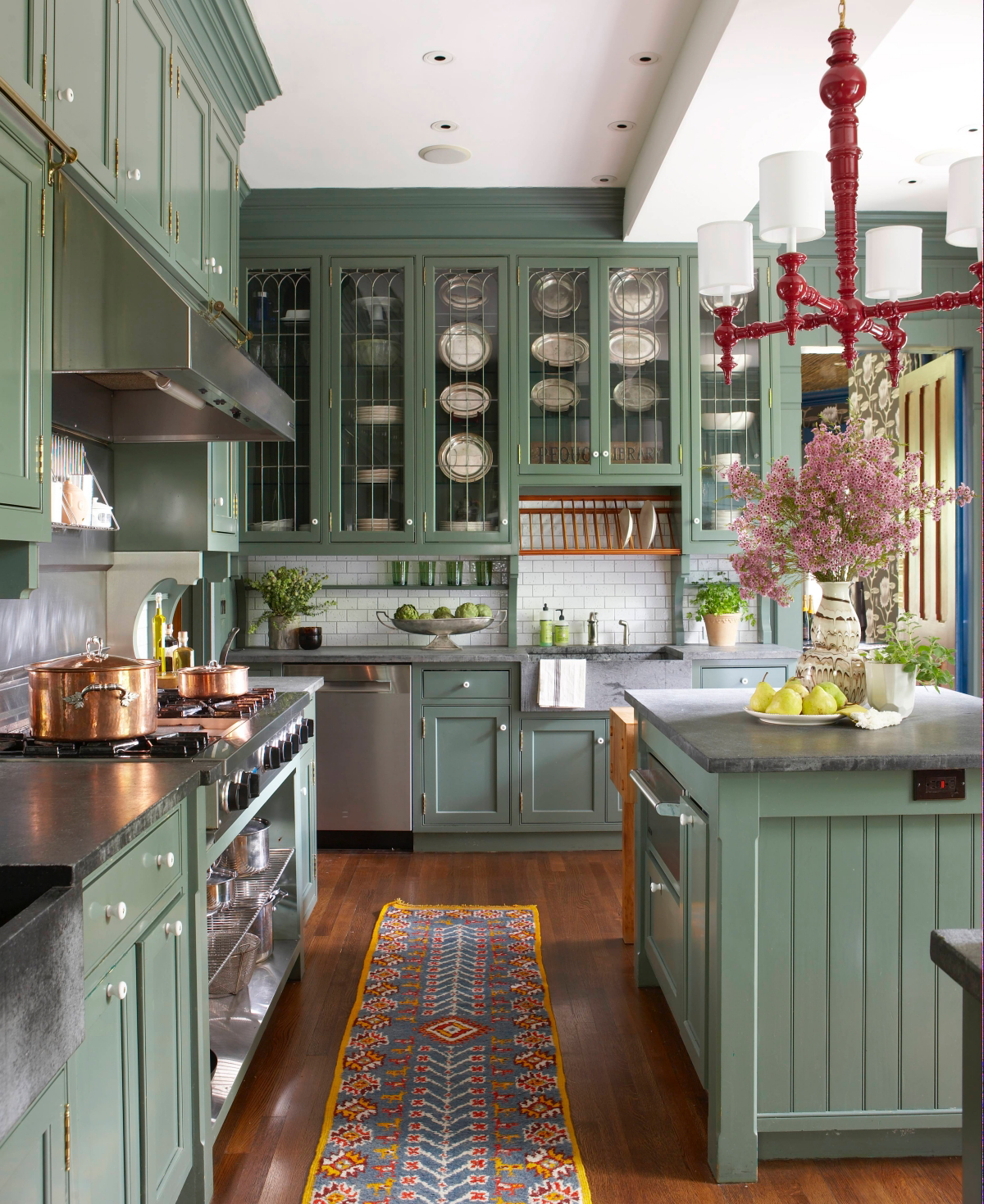
Don’t forget the fifth wall! The ceiling is a massive, uninterrupted surface.
Instead of a standard flat white, consider painting the ceiling a very pale, barely-there version of your cabinet color, or a soft, warm white. This simple trick draws the eye upward, making the room feel taller, and wraps the space in a cohesive, thoughtfully designed envelope of color.
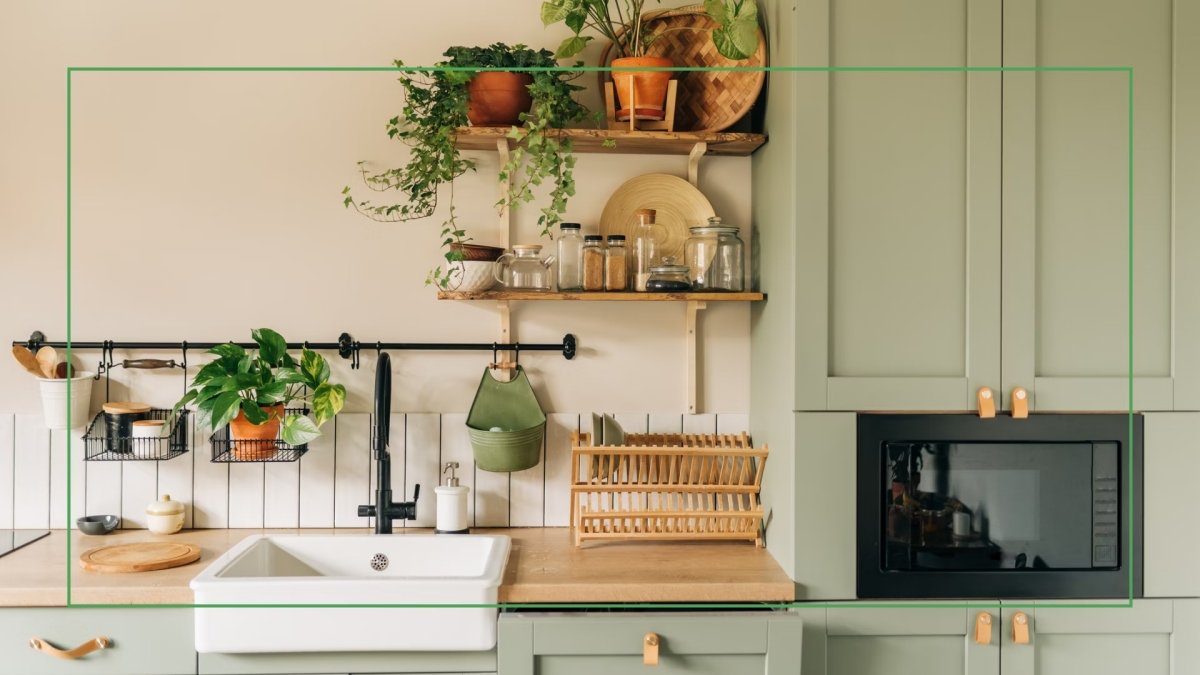
- Clean with a soft, damp microfiber cloth and a drop of mild dish soap.
- Avoid abrasive sponges or harsh chemical cleaners which can dull or strip the paint finish over time.
- Address spills, especially acidic ones like tomato sauce or lemon juice, immediately to prevent staining.
The lighting in your kitchen will completely change how your sage green appears. Under warm-toned LED bulbs (around 2700K), a sage with yellow undertones will feel cozy and almost olive. The same color under cool-toned bulbs (4000K+) can look grayer and more sterile. Before you commit, test your paint swatch under your actual kitchen lights, both day and night, to ensure you love how it behaves in your specific environment.

